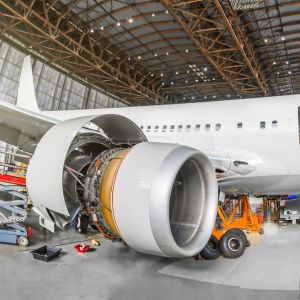Plastics have soared to new heights in the world of aviation. While metal once dominated airplane construction, plastics have become an integral part of the manufacturing process. This shift is driven by the need for lighter, more fuel-efficient aircraft and a growing focus on sustainability.
Plastics professionals are at the forefront of this transformation, harnessing innovative materials that enhance performance and efficiency. Read on and discover the essential role of plastics in airplane manufacturing.
Taking Flight With Plastics
The aviation industry didn’t always rely so heavily on plastics. Initially, airplanes were constructed using wood and metal. However, the quest for lighter and more durable materials led to the introduction of plastics.
Polyester and fiberglass were among the first, providing strength and flexibility that metals couldn’t match. Over time, the industry embraced various types of plastics to meet the complex demands of modern aircraft. Today, plastics are used in everything from cabin interiors to fuselage components, offering significant advantages over traditional materials.
The use of plastics in the aerospace industry has evolved dramatically. In the early 20th century, manufacturers began experimenting with Bakelite for minor components, marking the beginning of plastics’ aerospace journey.
By the 1970s, advanced composites like carbon fiber-reinforced plastic (CFRP) emerged, revolutionizing design possibilities. The shift was driven by a desire to reduce weight, increase fuel efficiency, and improve performance. Innovations in polymer science have since expanded the types of plastics available, each tailored for specific aircraft applications.
Different Plastics, Different Applications
Today’s aircraft are a composite of multiple materials, including metals, wood, and many types of plastics. Polycarbonates, for instance, are prized for their strength and impact resistance, making them ideal for windows and cockpit canopies. Polytetrafluoroethylene (PTFE) is used extensively for seals and gaskets due to its chemical inertness and temperature resistance.
Carbon fiber composites dominate structural components like airplane fuselage and wings, offering unparalleled strength-to-weight ratios. High-bond polyester material reinforces decals and other exterior markings. These materials enhance aircraft performance while contributing to fuel savings and environmental benefits.
Innovations and Future Trends
The future of plastics in airplane manufacturing is bright, with sustainability at its core. Advances in bio-based polymers offer promising alternatives to petroleum-derived plastics. These materials are designed to decompose more readily, reducing environmental impact.
Additionally, 3D printing technology has enabled complex plastic components production with minimal waste. This innovation enhances design flexibility and supports sustainability goals. Integrating renewable energy sources into production processes means the industry is paving the way for a greener aviation future.
The role of plastics in airplane manufacturing has shaped the industry for decades to come. As technology and materials science progress, so too will the potential of plastics in aviation. The integration of sustainable practices and innovative advancements will create a more efficient, lighter, and environmentally friendly aircraft fleet.










 Deering Estate
Deering Estate
 Massage Envy South Miami
Massage Envy South Miami
 Calla Blow Dry
Calla Blow Dry
 My Derma Clinic
My Derma Clinic
 Sushi Maki
Sushi Maki
 Sports Grill
Sports Grill
 The Healthy Kitchen
The Healthy Kitchen
 Golden Rule Seafood
Golden Rule Seafood
 Malanga Cuban Café
Malanga Cuban Café

 Kathleen Ballard
Kathleen Ballard
 Panter, Panter & Sampedro
Panter, Panter & Sampedro
 Vintage Liquors
Vintage Liquors
 The Dog from Ipanema
The Dog from Ipanema
 Rubinstein Family Chiropractic
Rubinstein Family Chiropractic
 Your Pet’s Best
Your Pet’s Best
 Indigo Republic
Indigo Republic




 ATR Luxury Homes
ATR Luxury Homes


 2112 Design Studio
2112 Design Studio
 Hamilton Fox & Company
Hamilton Fox & Company
 Creative Design Services
Creative Design Services
 Best Pest Professionals
Best Pest Professionals
 HD Tree Services
HD Tree Services
 Trinity Air Conditioning Company
Trinity Air Conditioning Company
 Cisca Construction & Development
Cisca Construction & Development
 Mosquito Joe
Mosquito Joe
 Cutler Bay Solar Solutions
Cutler Bay Solar Solutions


 Miami Royal Ballet & Dance
Miami Royal Ballet & Dance
 Christopher Columbus
Christopher Columbus
 Pineview Preschools
Pineview Preschools
 Westminster
Westminster
 Carrollton
Carrollton
 Lil’ Jungle
Lil’ Jungle
 Frost Science Museum
Frost Science Museum
 Palmer Trinity School
Palmer Trinity School
 South Florida Music
South Florida Music
 Pinecrest Orthodontics
Pinecrest Orthodontics
 Dr. Bob Pediatric Dentist
Dr. Bob Pediatric Dentist
 d.pediatrics
d.pediatrics
 South Miami Women’s Health
South Miami Women’s Health

 The Spot Barbershop
The Spot Barbershop
 My Derma Clinic
My Derma Clinic




 Miami Dance Project
Miami Dance Project

 Rubinstein Family Chiropractic
Rubinstein Family Chiropractic
 Indigo Republic
Indigo Republic

 Safes Universe
Safes Universe
 Vintage Liquors
Vintage Liquors
 Evenings Delight
Evenings Delight





 Atchana’s Homegrown Thai
Atchana’s Homegrown Thai
 Baptist Health South Florida
Baptist Health South Florida

 Laser Eye Center of Miami
Laser Eye Center of Miami
 Visiting Angels
Visiting Angels
 OpusCare of South Florida
OpusCare of South Florida

 Your Pet’s Best
Your Pet’s Best





 HD Tree Services
HD Tree Services
 Hamilton Fox & Company
Hamilton Fox & Company


 Creative Design Services
Creative Design Services